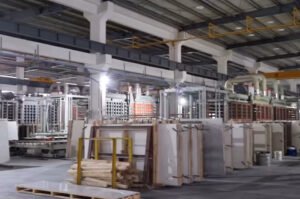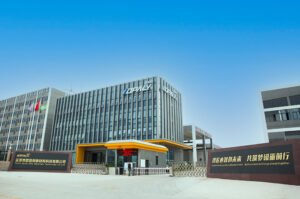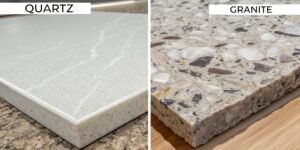Struggling with complex environmental rules in quartz production? Navigating these regulations is essential for your business to avoid fines and stay competitive in the global market.
The best way to comply is to implement strict dust control, manage wastewater with proper treatment systems, use eco-friendly raw materials like low-VOC resins, adopt energy-efficient technology, and follow waste recycling mandates. These steps are critical for meeting international standards.
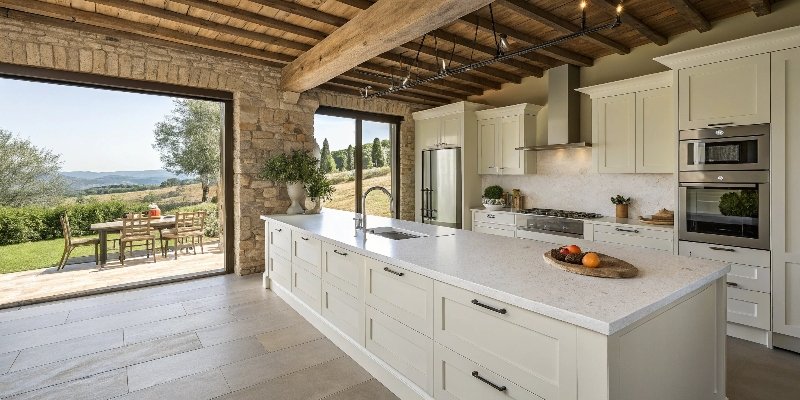
As an exporter of building materials since 2012, I've seen how important these rules have become. For procurement managers like Rajiv Patel in Mexico who I work with, proof of compliance is no longer a "nice-to-have" but a core requirement. He needs to know that his supply chain is secure and that the materials he sources meet strict quality and environmental standards. Let's explore how you can meet these demands and ensure your operations are responsible and ready for the global market.
What are the environmental impacts of quartz countertops?
You know quartz is a great product, but are you worried about its environmental footprint? This concern can affect your reputation and your ability to attract eco-conscious clients.
The main environmental impacts stem from the manufacturing process. These include air pollution from silica dust, water contamination from chemical runoff, high energy use during curing and polishing, and waste from leftover materials. Addressing these is key.
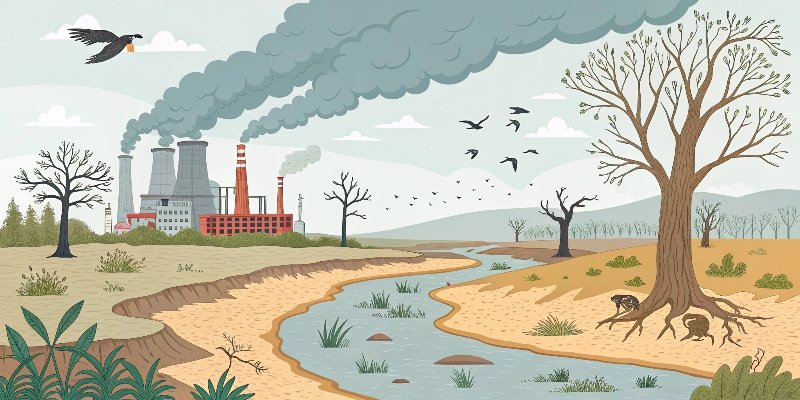
Breaking Down the Environmental Footprint
When I talk with procurement managers, they want to understand the full lifecycle of a product. They aren't just buying a slab; they are investing in a material that has to align with their company's sustainability goals. The environmental impact is a huge part of that conversation. It's not just about the final product, but about how it's made. For example, China's "Blue Sky Defense War" plan puts a sharp focus on air quality, which directly impacts how we handle dust during production. If we don't manage it correctly, we risk not only fines but also being unable to export to markets that demand clean production. This is why a deep understanding of each impact is vital for maintaining a reliable supply chain.
| Environmental Impact | Description | My Experience with Mitigation |
|---|---|---|
| Air Pollution | Production, especially cutting and grinding, releases fine silica dust (PM2.5), a regulated air pollutant. | We must use effective dust suppression and collection systems. This is a non-negotiable for meeting both local laws and the expectations of international clients. |
| Water Pollution | Wastewater from the process contains silica particles and chemical residues from resins and binders. | I work with factories that have closed-loop water treatment systems. They treat and reuse water, which is essential under China’s strict Water Pollution Prevention and Control Law. |
| Energy Consumption | Curing ovens and polishing machines are energy-intensive, contributing to a high carbon footprint. | We are increasingly adopting energy-efficient technologies. This aligns with China's goal of carbon neutrality and helps keep costs down, making our products more competitive. |
| Waste Generation | Scrap quartz, leftover resin, and other byproducts require proper disposal. | Effective waste management is crucial. We focus on recycling scrap materials, as mandated by China's solid waste laws. This minimizes landfill use and avoids potential trade barriers. |
How does quartz help the environment?
Many buyers assume all engineered stone is bad for the planet. This idea can make it harder to sell a premium product, even if it has green benefits.
Quartz helps the environment because it is incredibly durable, which means less frequent replacement. It also often contains recycled materials and needs no harsh chemical sealants, making it a healthier choice.

Key Eco-Friendly Attributes of Quartz
When I pitch quartz to new clients, I always lead with its sustainable features. It's easy to focus on the negatives of manufacturing, but the benefits of the final product are powerful selling points. A procurement manager like Rajiv is focused on long-term value. He knows that a durable product that doesn't need constant resealing or replacement is not only cost-effective but also better for the environment. The longevity of quartz is one of its greatest strengths. Unlike other materials that may wear down or go out of style, a high-quality quartz slab can last for decades. This durability means fewer resources are consumed over time for repairs and replacements, which is a key story to tell in today's market.
| Eco-Friendly Benefit | How It Helps the Environment | My Experience in the Market |
|---|---|---|
| Exceptional Durability | Quartz slabs are non-porous, scratch-resistant, and stain-resistant. They last for decades, reducing the need for replacements and conserving resources. | This is the number one selling point for clients focused on lifecycle cost. They want a "set it and forget it" surface, and quartz delivers that better than most. |
| Use of Recycled Content | Many quartz products incorporate recycled materials, such as crushed glass, mirrors, and post-industrial stone waste. | This is a growing trend. I'm seeing more demand for slabs with certified recycled content, especially for projects aiming for green building certifications like LEED. |
| Low Maintenance | Quartz does not require sealing or polishing with harsh chemical products after installation. Simple soap and water is enough for cleaning. | This reduces the use of volatile organic compounds (VOCs) in the home or commercial space, contributing to better indoor air quality, a major concern for families and employees. |
| Reduced Quarrying Impact | As an engineered product, quartz uses abundant quartz crystals rather than requiring the quarrying of massive, intact stone blocks like granite or marble. | While it still requires raw materials, the process is more controlled. We can create slabs in a factory, reducing the environmental disruption associated with traditional stone quarrying. |
What are the raw materials for quartz stone?
Do you ever wonder what exactly is in a quartz slab? Not knowing the core components can make it hard to judge quality and sustainability when you are sourcing.
A quartz slab is a composite material made of roughly 90% ground natural quartz. The rest is a mix of polymer resins to bind it and pigments to give it color.

The Anatomy of a Quartz Slab
Understanding the raw materials is fundamental to my business. When a client asks me about the quality of my quartz, my answer always starts with the basics: the quartz crystals and the resin. The quality of these two components determines the final product's durability, appearance, and environmental safety. For example, using high-purity quartz ensures strength and clarity, while sourcing high-grade, low-VOC resins is critical for meeting environmental regulations in markets like the European Union. China’s trade policies are increasingly pushing manufacturers towards greener materials to stay competitive globally. I make it a point to visit the factories I partner with to see their raw materials firsthand. It’s the only way to guarantee that what we ship meets the high standards my clients expect.
| Component | Approximate Percentage | Function in the Slab | Environmental Consideration |
|---|---|---|---|
| Natural Quartz Crystals | 90-93% | This is the main ingredient that provides hardness, durability, and the stone-like appearance. | Quartz is one of the most abundant minerals on Earth. The crystals are ground, which is less invasive than block quarrying. |
| Polymer Resins | 7-10% | Acts as a binder to hold the quartz crystals together. Polyester or epoxy resins are most common. | The key here is sourcing resins with low Volatile Organic Compound (VOC) emissions. This is crucial for meeting export standards and ensuring good indoor air quality. |
| Pigments and Dyes | <1% | These are added to the resin mixture to create the desired color and patterns, from solid white to marble-like veining. | Modern pigments are typically stable and non-toxic. The small quantity used has a minimal environmental impact. |
| Additives | <1% | Can include recycled materials like glass or mirrors for decorative effect, or other agents to improve UV resistance and workability. | This is where innovation happens. Using recycled additives is a great way to improve the eco-friendliness of the final product and appeal to green-conscious buyers. |
Which is more environmentally friendly, quartz or granite?
You need to choose between quartz and granite for a project. But making the most sustainable choice feels complicated, with conflicting information everywhere.
In most cases, quartz is the more environmentally friendly option. Its manufacturing is more controlled, it can include recycled content, it produces fewer emissions, and it doesn't need chemical sealants after installation.
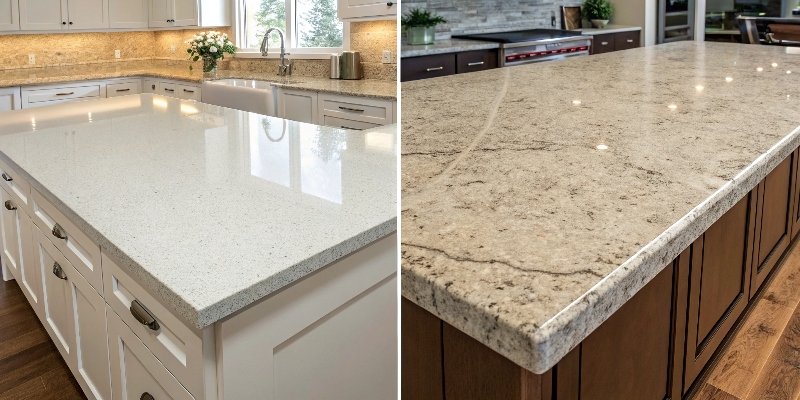
Quartz vs. Granite: An Environmental Showdown
This is a question I get almost every week. Both quartz and granite are excellent, durable materials, but their environmental stories are very different. From my perspective as an exporter, the key difference lies in the supply chain. Granite quarrying is an extractive industry with a heavy environmental toll, and shipping massive, heavy blocks of solid stone around the world has a significant carbon footprint. In contrast, quartz manufacturing is a more controlled, industrial process. We can locate factories strategically to reduce transport emissions, and we can innovate with recycled materials and low-VOC resins. For a procurement manager like Rajiv, who balances cost, quality, and sustainability, quartz often comes out on top because its production can be more easily certified and verified to meet modern green standards.
| Factor | Quartz | Granite | The Verdict |
|---|---|---|---|
| Source of Material | Made from abundant quartz crystals, often with recycled content. Manufacturing is controlled in a factory. | Quarried directly from the earth in massive blocks, which is energy-intensive and disruptive to ecosystems. | Quartz wins. The process is less invasive and offers opportunities for using recycled materials. |
| Transportation | Can be produced closer to markets. More efficient transportation of raw materials (crystals vs. huge blocks). | Heavy, solid blocks are transported long distances from quarry to fabricator, resulting in higher carbon emissions. | Quartz wins. The logistics are generally more energy-efficient. |
| Manufacturing | An engineered process that uses energy but allows for waste recycling and water reclamation. Low-VOC resins are available. | Cutting and polishing solid stone also consumes energy and water. Sealing often introduces VOCs. | Quartz wins. The factory setting allows for better control over emissions and waste streams. |
| Health and Safety | Non-porous and emits no VOCs after installation, improving indoor air quality. It is also naturally low in radon. | It is a porous stone that requires sealants, which can release VOCs. It can also emit low levels of radon gas. | Quartz wins. It's generally a safer and healthier choice for indoor environments. |
Conclusion
Following environmental rules in quartz production is not just about compliance, it's about building a better, more sustainable business for the future.



